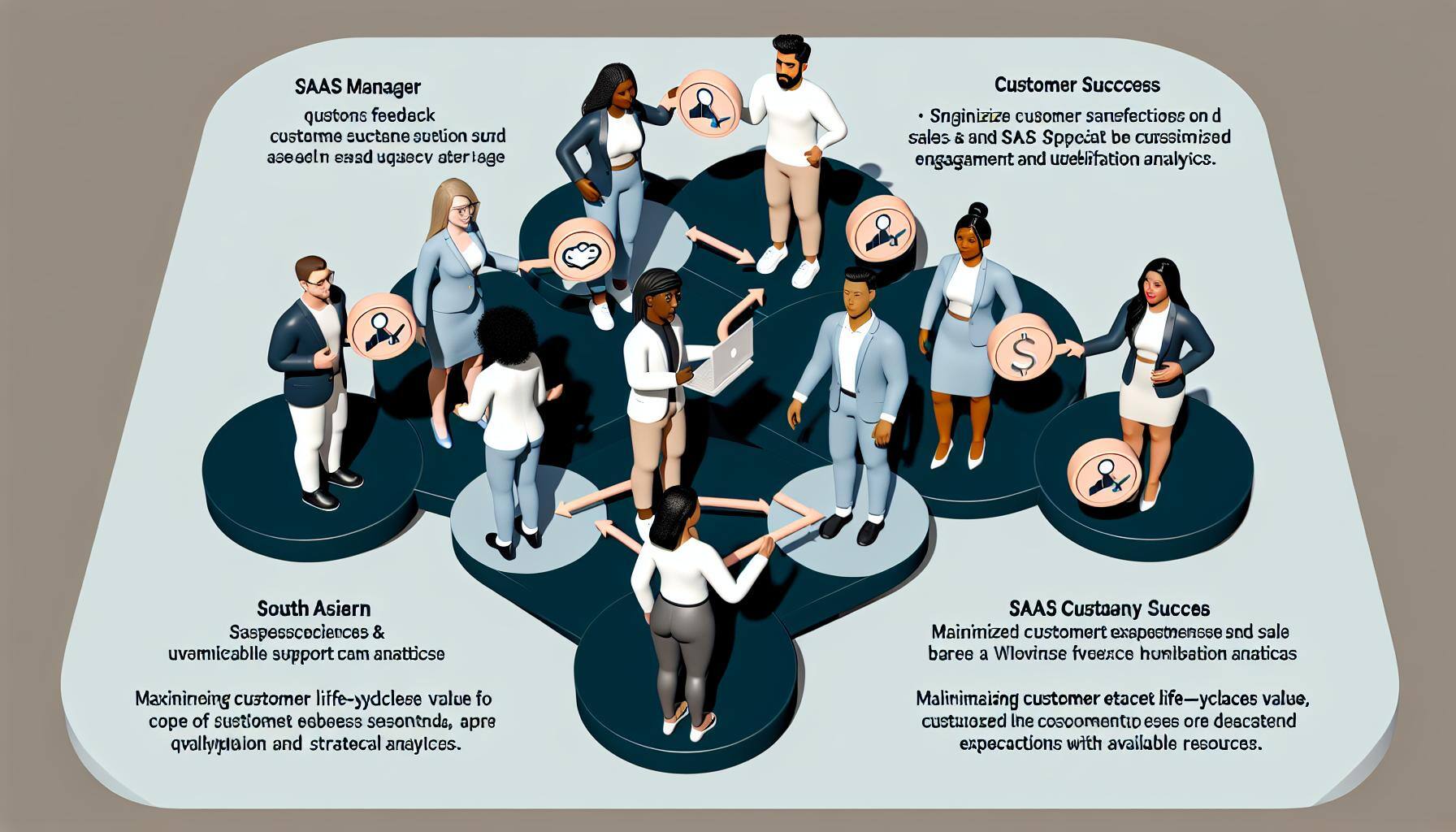Best Practices and Strategies for Building a Remote Team in SaaS
In the rapidly evolving landscape of SaaS (Software as a Service), the concept of a remote team has become increasingly prevalent. This shift towards...
4 min read
Brian Polackoff
:
Apr 15, 2024 8:45:00 AM

In the modern workspace landscape, the concept of remote work has gained immense popularity, especially within the realm of Software as a Service (SaaS) companies. Remote teams, often distributed across various geographical locations, are becoming the norm rather than the exception. To succeed in this environment, understanding the dynamics of remote SaaS teams and implementing best practices is crucial.
One of the key advantages of a remote SaaS team is increased flexibility and access to talent. By embracing remote work, companies can tap into a global pool of skilled professionals without being constrained by physical boundaries. This approach not only broadens the talent pool but also promotes diversity and innovation within the team.
Cost savings and reduced overhead are another compelling reason for companies, especially SaaS founders and ventures, to opt for remote teams. By eliminating the need for a centralized physical office, companies can significantly reduce expenses associated with office space, utilities, and other overhead costs. This financial flexibility can be redirected towards product development and growth initiatives.
Enhanced work-life balance is a vital aspect that remote work provides for employees. Remote workers have the autonomy to structure their workday in a way that aligns with their personal lives, leading to increased job satisfaction and overall well-being. This balance is crucial for sustaining productivity and preventing burnout among team members.
In the modern workspace landscape, the concept of remote work has gained immense popularity, especially within the realm of Software as a Service (SaaS) companies. Remote teams, often distributed across various geographical locations, are becoming the norm rather than the exception. To succeed in this environment, understanding the dynamics of remote SaaS teams and implementing best practices is crucial.
One of the key advantages of a remote SaaS team is increased flexibility and access to talent. By embracing remote work, companies can tap into a global pool of skilled professionals without being constrained by physical boundaries. This approach not only broadens the talent pool but also promotes diversity and innovation within the team.
Cost savings and reduced overhead are another compelling reason for companies, especially SaaS founders and ventures, to opt for remote teams. By eliminating the need for a centralized physical office, companies can significantly reduce expenses associated with office space, utilities, and other overhead costs. This financial flexibility can be redirected towards product development and growth initiatives.
Enhanced work-life balance is a vital aspect that remote work provides for employees. Remote workers have the autonomy to structure their workday in a way that aligns with their personal lives, leading to increased job satisfaction and overall well-being. This balance is crucial for sustaining productivity and preventing burnout among team members.
Effective communication is essential for remote SaaS teams to function cohesively. Leveraging asynchronous communication tools like Slack or Zoom can bridge the gap between team members in different time zones. Encouraging transparent and frequent communication helps in aligning goals and fostering a sense of unity across the team. Regular video calls or team meetings provide opportunities for face-to-face interactions, strengthening team collaboration and rapport.
Project management plays a vital role in ensuring tasks are completed efficiently and on time in a remote SaaS setup. Leveraging tools such as Jira or Trello helps in organizing tasks, setting priorities, and tracking progress. Establishing clear project timelines, defining roles and responsibilities, and implementing agile methodologies enable teams to adapt quickly to changing project requirements. Regular check-ins and status updates facilitate transparency and accountability within the team.
Onboarding new employees in a remote SaaS environment requires a well-structured and comprehensive process. Providing new hires with access to relevant documentation, training materials, and mentorship programs ensures a smooth transition into the team. Conducting virtual orientation sessions, introducing them to key team members, and setting clear expectations from the outset fosters a sense of belonging and engagement. Feedback mechanisms and regular check-ins during the onboarding phase help in addressing any challenges and integrating new hires into the team seamlessly.
In today's dynamic work landscape, transitioning to a fully remote Software as a Service (SaaS) venture requires careful planning and execution. Embracing remote work brings a myriad of benefits, from increased productivity to access to a global talent pool. To make this transition successful, organizations must implement best practices and strategies tailored for remote teams.
Transitioning to a fully remote SaaS venture involves several key steps. Firstly, establishing clear communication channels and protocols is essential for remote teams to collaborate effectively. Implementing project management tools, such as Jira, can aid in organizing tasks and tracking progress seamlessly. Additionally, fostering a positive remote work culture is crucial for employee engagement and well-being.
When managing tasks and projects in a remote setting, prioritization is key to maintaining efficiency. Utilize tools like Trello to organize tasks, set deadlines, and allocate responsibilities effectively. Implementing agile methodologies can help teams adapt to changing project requirements swiftly. Regular check-ins and status updates ensure transparency and accountability within the team.
To foster a positive remote work culture, organizations must empower remote workers with autonomy and clear expectations. Encouraging team building activities, even in a virtual setting, can strengthen relationships and collaboration. Supporting employee well-being with work-life balance initiatives is essential for sustaining productivity and preventing burnout in a remote work environment.
Project management tools are essential in the SaaS industry to streamline workflows, enhance collaboration, and ensure timely project completion. These tools offer a centralized platform where teams can plan, track, and manage projects efficiently. By utilizing project management software, organizations can improve productivity, reduce errors, and boost overall performance.
Project management tools come in various forms, ranging from simple task trackers to comprehensive software with advanced features. These tools typically include task assignment, progress tracking, milestone setting, collaboration options, and reporting functionalities. By providing a structured approach to project planning and execution, project management tools facilitate better organization and communication among team members.
When selecting project management tools for remote teams in the SaaS industry, it's crucial to consider factors such as ease of use, integration capabilities, scalability, and team collaboration features. Tools like Jira or Trello are popular choices for remote SaaS teams due to their flexibility, customization options, and suitability for agile methodologies. By selecting the right tools, organizations can streamline processes, enhance communication, and adapt to the unique challenges of remote work effectively.
To maximize efficiency with project management software in the SaaS industry, organizations should focus on optimizing workflows, setting clear goals, monitoring progress, and fostering collaboration among team members. Leveraging automation features, setting up regular check-ins, and utilizing data analytics capabilities can further enhance project efficiency and outcomes. By integrating project management software into daily operations, SaaS companies can achieve higher productivity levels, improve project outcomes, and drive successful business results.

In the rapidly evolving landscape of SaaS (Software as a Service), the concept of a remote team has become increasingly prevalent. This shift towards...

In the highly competitive landscape of B2B SaaS, the importance of a proficient customer success team cannot be overstated. A well-coordinated team...

In the fiercely competitive landscape of Software as a Service (SaaS), the foundation of a successful product lies in the strength of its product...